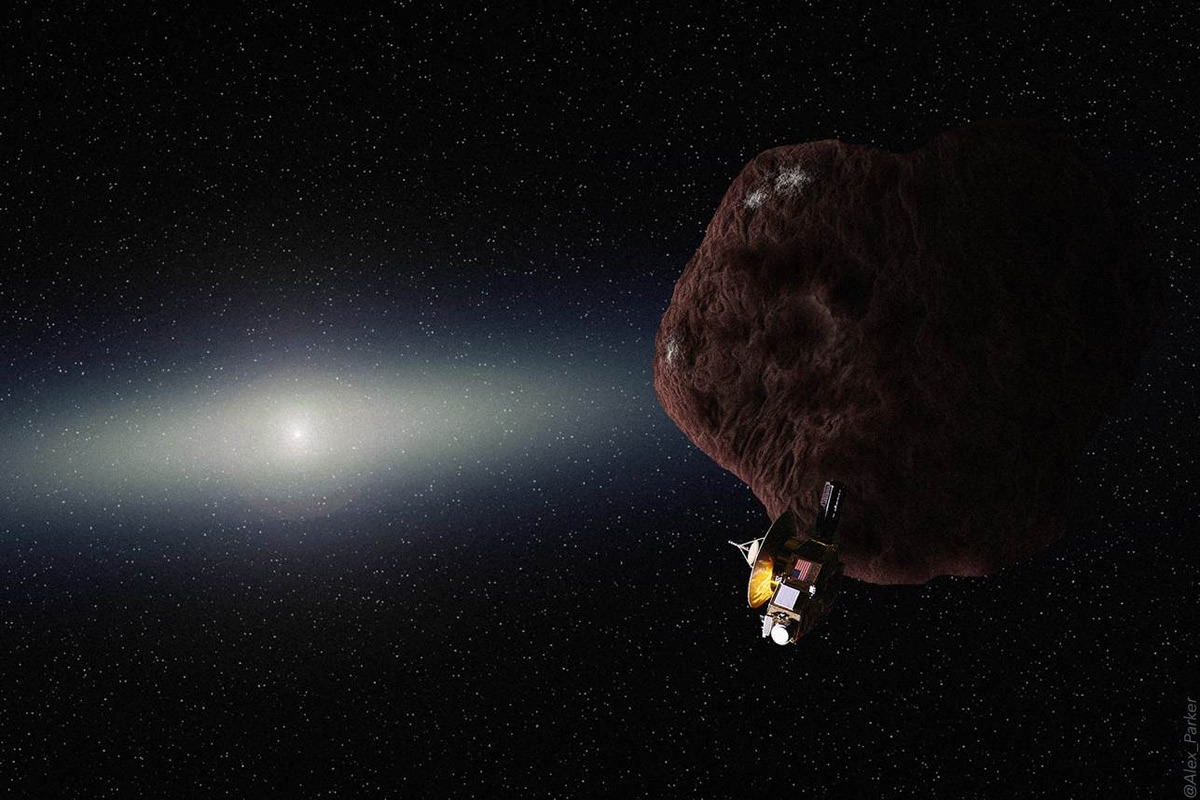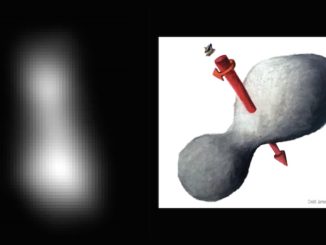
A frozen fragment left over from the formation of the solar system is set to become the most distant object ever explored by a human-built space probe, scientists working on the New Horizons mission said Friday.
The selection is pending final approval by NASA managers, which must consider a proposal submitted by New Horizons mission scientists against other priorities competing for limited federal funding.
The New Horizons spacecraft has plenty of fuel left after its July 14 flyby of Pluto. Data playback from the Pluto encounter is set to continue into late 2016, then the spacecraft could be repurposed to go to another tiny world silently circling the sun in the Kuiper Belt, a halo of small proto-planets beyond Neptune.
Managers announced Friday that a newly-discovered object 28 miles (45 kilometers) across — nearly the size of Rhode Island — is the target New Horizons will steer toward later this year. It is less than 1 percent the size of Pluto, but 10 times larger than most comets, such as Comet 67P/Churyumov-Gerasimenko being studied by Europe’s Rosetta mission.
The object is named 2014 MU69, and it circles about 4.1 billion miles (6.6 billion kilometers) from the sun in a slightly oval-shaped orbit. That is about a billion miles farther out than Pluto.
“Even as the New Horizon’s spacecraft speeds away from Pluto out into the Kuiper Belt, and the data from the exciting encounter with this new world is being streamed back to Earth, we are looking outward to the next destination for this intrepid explorer,” said John Grunsfeld, astronaut and chief of NASA’s science division. “While discussions whether to approve this extended mission will take place in the larger context of the planetary science portfolio, we expect it to be much less expensive than the prime mission while still providing new and exciting science.”
Scientists needed to select new target for New Horizons this month to plan for a series of rocket burns in October and November to guide the spacecraft toward its next destination. The maneuvers will set up for a close-up flyby of 2014 MU69 on Jan. 1, 2019.
The diminutive world was one of two finalists to become New Horizons’ next aim point. Another, slightly larger Kuiper Belt Object required the spacecraft to burn more of its propellant to reach.
The winning world was dubbed “Potential Target 1” before last week’s decision.
Engineers project New Horizons will need less than half of its remaining fuel to fly to 2014 MU69, leaving a significant propellant reserve to correct potential navigation errors on the way to the uncharted object. It also keeps open a possibility for New Horizons to continue on a second extended mission after the flyby, potentially making astronomical observations and probing the boundary between the solar system and interstellar space.
Experts are not sure of the tiny world’s shape, but it is not expected to be rounded into a sphere like larger solar system bodies.
New Horizons was designed to continue on to a second flyby after its encounter with Pluto, but NASA preferred to split the mission into two phases. The next part of the mission after the Pluto data downlink requires a peer review by senior scientists before the space agency gives the go-ahead to keep funding the mission’s operations for the final stages of the trip to 2014 MU69..
The spacecraft, about the size of a baby grand piano, carries a communications system capable of transmitting and receiving long-distance radio signals at distances far beyond Pluto, and the probe’s science instruments were designed to take observations with much dimmer sunlight than available at Pluto.
Pluto is the largest known object in the Kuiper Belt, which is littered with thousands of much smaller bodies thought to be the building blocks of worlds like Pluto and the other planets.
“2014 MU69 is a great choice because it is just the kind of ancient KBO, formed where it orbits now, that the decadal survey desired us to fly by,” said Alan Stern, New Horizons principal investigator from the Southwest Research Institute in Boulder, Colorado. “Moreover, this KBO costs less fuel to reach [than other candidate targets], leaving more fuel for the flyby, for ancillary science, and greater fuel reserves to protect against the unforeseen.”
Stern said New Horizons can also turn to point its instruments toward other Kuiper Belt Objects on the way to 2014 MU69. While the images will not reveal the same detail expected from the Jan. 1, 2019, flyby, the observations will be better than possible with the Hubble Space Telescope, he said.
Hubble discovered 2014 MU69 in 2014 after a last-ditch survey using ground observatories turned up no viable candidates for New Horizons’ follow-up destination after Pluto.
“There’s so much that we can learn from close-up spacecraft observations that we’ll never learn from Earth, as the Pluto flyby demonstrated so spectacularly,” said John Spencer, New Horizons science team member from the Southwest Research Institute. “The detailed images and other data that New Horizons could obtain from a KBO flyby will revolutionize our understanding of the Kuiper Belt and KBOs.”
Email the author.
Follow Stephen Clark on Twitter: @StephenClark1.



